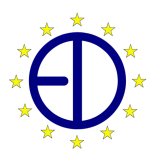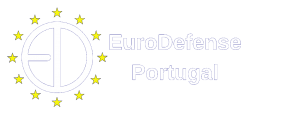Introduction
In recent decades, the concept of space security has broadened beyond its traditional military focus to include economic, societal and environmental dimensions. Global Navigation Satellite Systems (GNSS), including GPS (USA), Galileo (EU), Beidou (China), and GLONASS (Russia), now form the backbone of global positioning, navigation and timing (PNT) services that support modern technologies. Originally developed for military purposes, they have become critical to daily life and critical infrastructure, particularly aviation, where pilots and air traffic systems rely on satellite-based navigation for safe and efficient operations. At the same time, this growing dependence has also created new vulnerabilities. GNSS signals can be disrupted or manipulated, which now raises serious concerns for both safety and security.
GNSS Interference and Flight Safety
As dependence on satellite navigation has grown, these systems have also become more exposed to purposeful interference. Jamming and spoofing attacks are increasingly common,
especially in border regions and conflict zones such as the Baltic area, due to its low cost and minimal required equipment. Jamming blocks GNSS signals, causing its immediate loss, while spoofing manipulates them by transmitting false data, leading to inaccurate positioning and potential navigational errors.
GNSS radio-frequency interference (RFI) has become a common tool of hybrid warfare that targets radio frequencies on which modern technology depends. By degrading navigation data, it can reduce positioning accuracy, increase pilot workload and stress, raise operational costs and overall weaken trust in satellite navigation. While all aircraft are vulnerable to RFI, smaller planes, helicopters, drones and airports located near exposed areas face greater risks, as they often rely on consumer-grade GPS receivers and do not have additional navigation assistance.
Although GNSS jamming alone does not result in plane crashes, interference can contribute to dangerous situations such as flight deviations, near-collisions and emergency interventions. The 1972 Oslo fatal incident is one of the rare cases in which ground-based precision navigation systems, like the Instrument Landing System (ILS), has been manipulated and failed to support operations when satellite signals were altered or unavailable.
GNSS Threats in Hybrid Warfare
Since the invasion of Ukraine, Russia has intensified tensions with NATO and reinforced its use of electronic warfare (EW), particularly through GNSS jamming and spoofing. These tactics have blurred the line between military and civilian domains, as interference with satellite signals has affected not only military operations but also commercial aviation and civilian activities across Europe.
A sharp increase in jamming and spoofing cases has been recorded in recent years, suggesting that RFI has become an integral part of contemporary hybrid or “grey zone” warfare, in which hostile actions occur as an open conflict in disguise. Russia uses this strategy to hide the locations of military and political figures, for example, resulting in flight disruptions far beyond Russia’s borders, particularly in conditions of poor visibility or crowded airspace. According to the Council of the EU, Poland registered over 2,700 cases in
January 2025 alone, exposing critical security gaps and the strategic vulnerability of satellite infrastructure in modern geopolitical competition.
These incidents reinforce the EU’s commitment to strengthening its defence capabilities and accelerating efforts to improve the resilience and protection of satellite navigation and communication systems across Europe.
EU Preparedness and Response
European institutions are more conscious of the growing threat brought by GNSS interference, but their actions are still developing in response to the scale and urgency of the risk. Recent incidents, including the jamming of satellite navigation of the aircraft carrying the EU Commission President Ursula von der Leyen, highlight that such interference is no longer hypothetical but a present concern that affects aviation operations across Europe.
In response, the EU has adopted several approaches to strengthen resilience. Politically, it is raising awareness of GNSS risks in international forums and coordinating a collective European response. Technically, measures are being integrated into the Galileo satellite and related systems, including signal authentication to detect spoofing, encrypted transmissions for governmental use and the establishment of monitoring services to detect and locate interference. Plans to create a multi-orbit GNSS constellation are also in progress, combining Galileo satellites with a future low-earth orbit network to provide redundancy and fallback capabilities.
The member states and aviation authorities are also working closely to improve contingency planning, conduct crisis exercises and enhance incident reporting. While these steps show a proactive and promising approach, they are still being implemented unevenly, and the EU continues to be dependent on external GNSS networks, leaving strategic vulnerabilities.
Conclusion
The instability posed by GNSS interference does not only affect aircraft presently, it also slowly weakens the reliability, safety and trust in the systems that modern aviation depends
on. As reliance on GNSS continues to grow and interference spreads geographically, the use of jamming and spoofing as a “grey zone” warfare tactic shows no sign of slowing. The EU is taking steps to protect critical transport and infrastructure from GNSS interference, but its preparedness remains a work in progress, requiring sustained political, technical, and operational effort to fully mitigate risks and strengthen European strategic autonomy.
Ultimately, GNSS interference must be recognised not merely as an aviation challenge, but as a space security concern that directly affects European sovereignty, public safety and geopolitical stability, making resilience in space essential to Europe’s future security strategy.
Lisbon, November 28th 2025
Leonor Biscaia da Costa Gonçalves
EuroDefense-Jovem Portugal
References
Council of the European Union. (2025, May 22). Call for common actions in response to Global Satellite Navigation Systems (GNSS) jamming and spoofing threats (Document
9198/25).
European Union Aviation Safety Agency. (2024). Safety information bulletin operations – ATM/ANS.
Felski, A. (2024). Threats for GNSS – Present status & counteractions. Annual of Navigation.
Goward, D. (2023). Increasing GNSS interference: UK and EU warn aviation. GPS World.
Harris, M. (2021). FFA files reveal a surprising threat to airline safety: the US military’s GPS test. IEEE Spectrum.
Kubilius, A. (2025, September 10). Serious threats to aviation and maritime transport from Global Navigation Satellite System interference: urgent need to build resilience against
spoofing and jamming [Speech, European Parliament plenary session].
Nilsen, T. (2022). More Russian GPS jamming than ever across border to Norway. The Barents Observer.
Radoš, K., Brkić, M., & Begušić, D. (2024). Recent advances on jamming and spoofing detection in GNSS. Sensors,
Roussi, A., Lecca, T., & Pollet, M. (2025, September 2). Von der Leyen’s GPS scare gripped Europe. The Russia allegations are starting to unravel. POLITICO.






